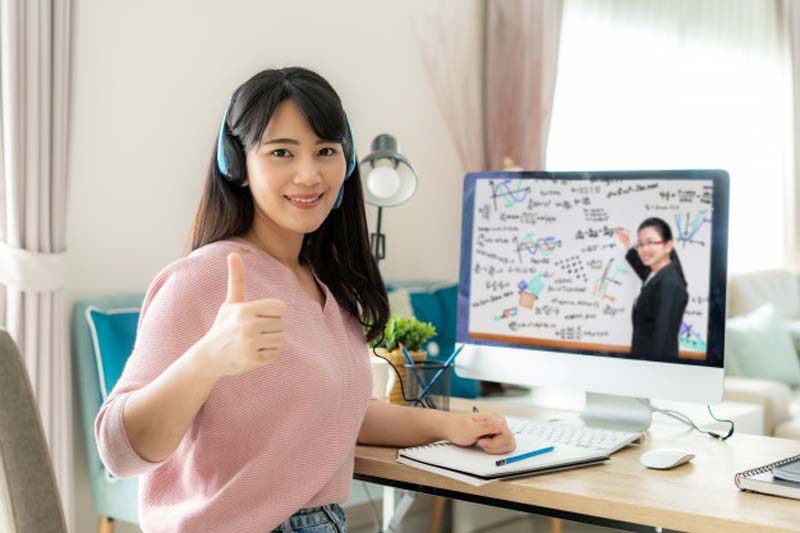
How we should guide post-pandemic students
Nidhal Guessoum
While some teaching and learning took place inside classrooms during the pandemic, most of the education world went online. Now, however, most of the students and teachers in the Arab world and elsewhere are resuming in-person classes — with various kinds of health precautions and pedagogical changes. Indeed, the pandemic has affected how we conduct learning and we educators should certainly draw lessons from that and make changes for an improved educational experience for all.
A large survey has recently been conducted among more than 40,000 American students who are going from high school to college. It was conducted between May and August by the Center for Postsecondary Research at Indiana University at Bloomington. Some of the questions focused on the online learning that the students undertook during the past 18 months or so, while other interesting questions focused on the students’ concerns about the future.
Online teaching was resoundingly rejected as a preferred mode of learning, with only 3 percent expressing a strong preference for it and 9 percent “somewhat” preferring it, while 51 percent strongly preferred the in-person format and another 23 percent expressed a moderate preference for it.
I can confirm from my first day of classes with students this week that they all have been eager to get back to the physical classroom. Many expressed their dislike for the online mode and one student told me she took “a gap year” because “online learning was not for me.”
I explained in an Arab News column several months ago that students do not like the online mode of learning because it severely reduces interaction, both social (with their classmates and friends) and pedagogical (with their teachers). Teachers, however, had other issues, most particularly the extent of cheating that takes place in online exams (something I have also written about in some detail), so much so that it essentially destroys the learning process.
From this part of the above survey, we learn that, for the post-pandemic education world, teachers must remember that a rich interaction with the students is a key driver for a successful learning experience.
The Indiana University survey also queried students about any concerns they may have about future opportunities, considering how much the pandemic has impacted our world. The results were surprising — and positive — to some extent: Only 8 percent expressed big concerns and another 15 percent expressed significant ones, while 29 percent had some concerns, 22 percent very few, and another 22 percent none at all. One would have imagined a more depressed outlook, so it is pleasing and encouraging to see youngsters optimistic and positive about the future of the world. This makes them more dynamic and ready to take on challenges and come up with innovative solutions.
Another lesson was brought home by the online education mode: Learners are different from one another and need different approaches by the teachers. Actually, the idea of different “learning styles” has been known for some time in the world of education, albeit somewhat controversially. Indeed, there are countless articles and books that divide students into several learning styles: Visual (learning more from images and diagrams than from texts), auditory (learning by listening), kinesthetic (hands-on or learning by doing), and textual (by reading/writing).
These learning styles have been disputed by some specialists; indeed, many teachers point out that some information, say a chemical reaction or a physical phenomenon, is obviously best observed (visually), not told about aurally or read about. However, many teachers note that some students, considering various ages and subjects, have a marked preference for some methods of learning, such as playing a game, discussing arguments with others, watching a video, etc.
The online teaching that we had to switch to during the past 18 months or so forced us educators to find various new ways to explain concepts and induce learning — another lesson teachers need to carry forward as they return to classrooms. This actually ties in with the interaction issue that I highlighted above: Offering material in a variety of formats significantly increases students’ engagement with the teacher and leads to great improvements in learning and performance.
A rich interaction with the students is a key driver for a successful learning experience.
All this actually fits perfectly with “modern” student-centered education. Indeed, in the modern education philosophy, the teacher becomes a facilitator of various learning activities in a “constructivist” approach, whereby the student learns by discovering (facts, ideas, arguments, etc.). Learning becomes activity/task-based, collaborative (with peers and within teams), interactive, technology-based, hybrid, integrative, etc. In fact, the whole world becomes a “flipped” classroom and every hour and every day become “class time.”
The interaction, engagement and excitation of students’ minds and senses leads to a larger goal: Guidance and mentoring for the growth of the student’s whole person.
As the great Irish poet W.B. Yeats said: “Education is not the filling of a pot but the lighting of a fire.”
Or, to quote Christa McAuliffe, the teacher who died in the Challenger space shuttle explosion in January 1986: “I touch the future. I teach.”
More than ever, we educators have a great task ahead of us: To guide students into this new, uncertain post-pandemic world to make it the best it can be.
Nidhal Guessoum is a professor at the American University of Sharjah, UAE.
